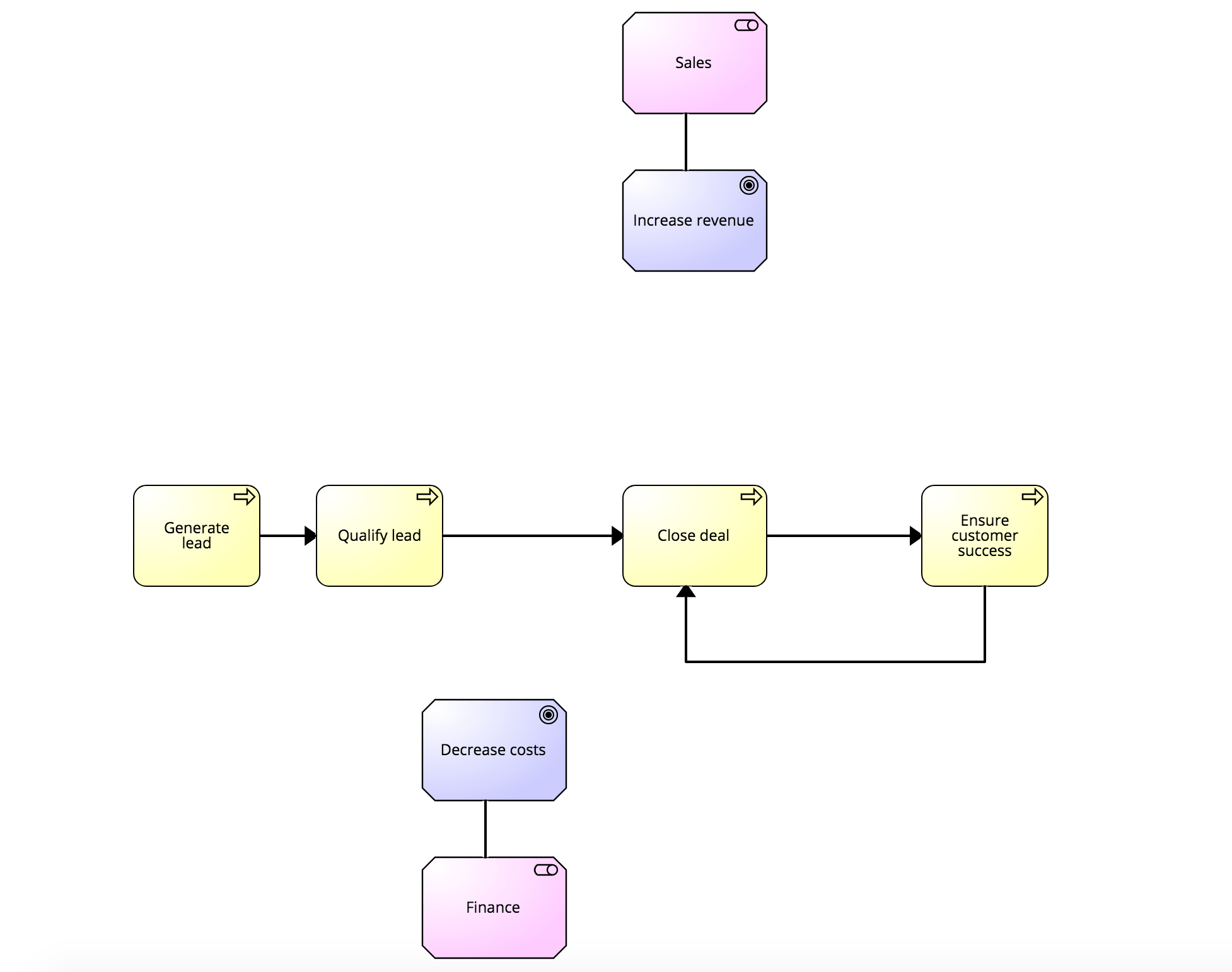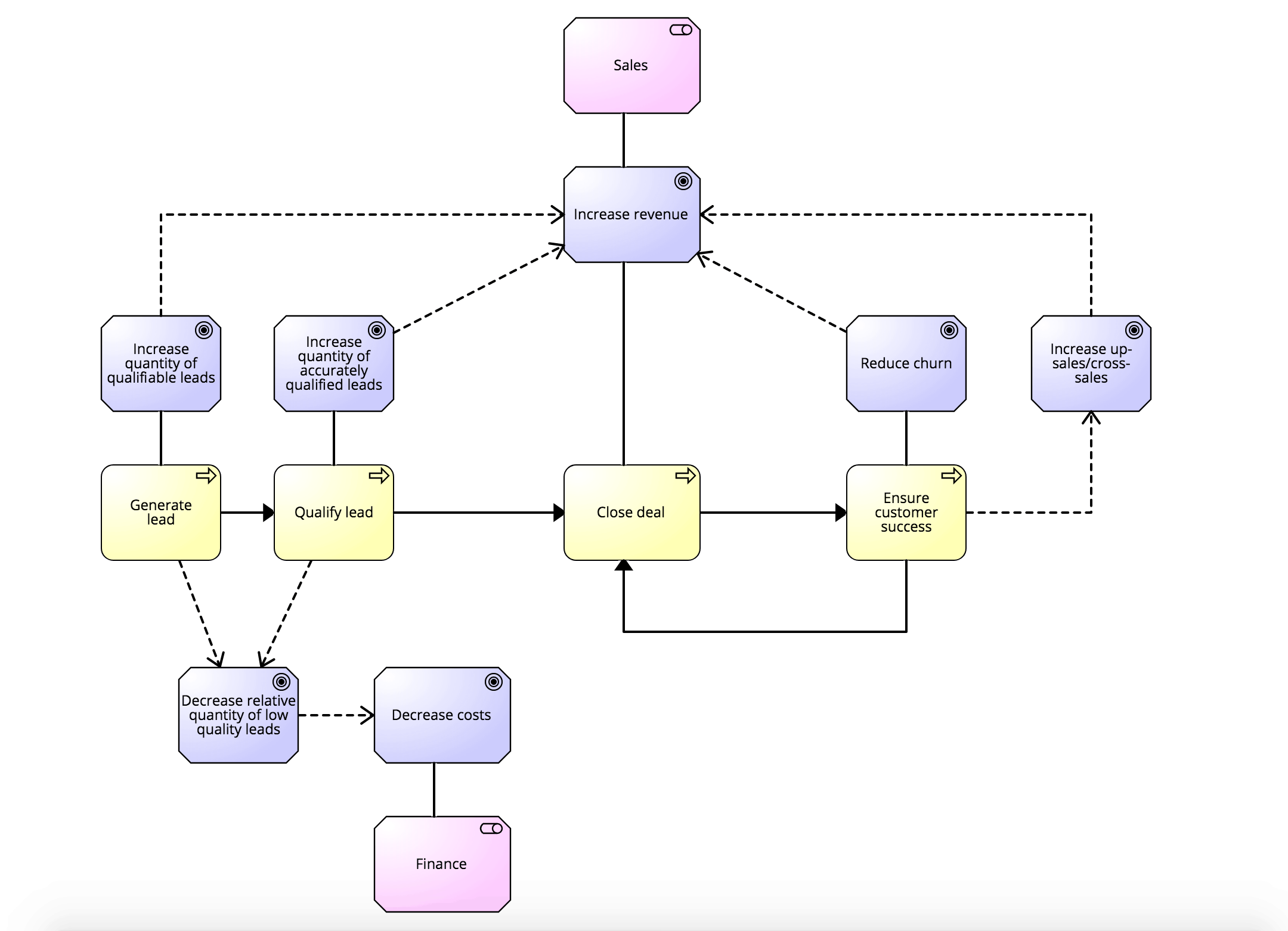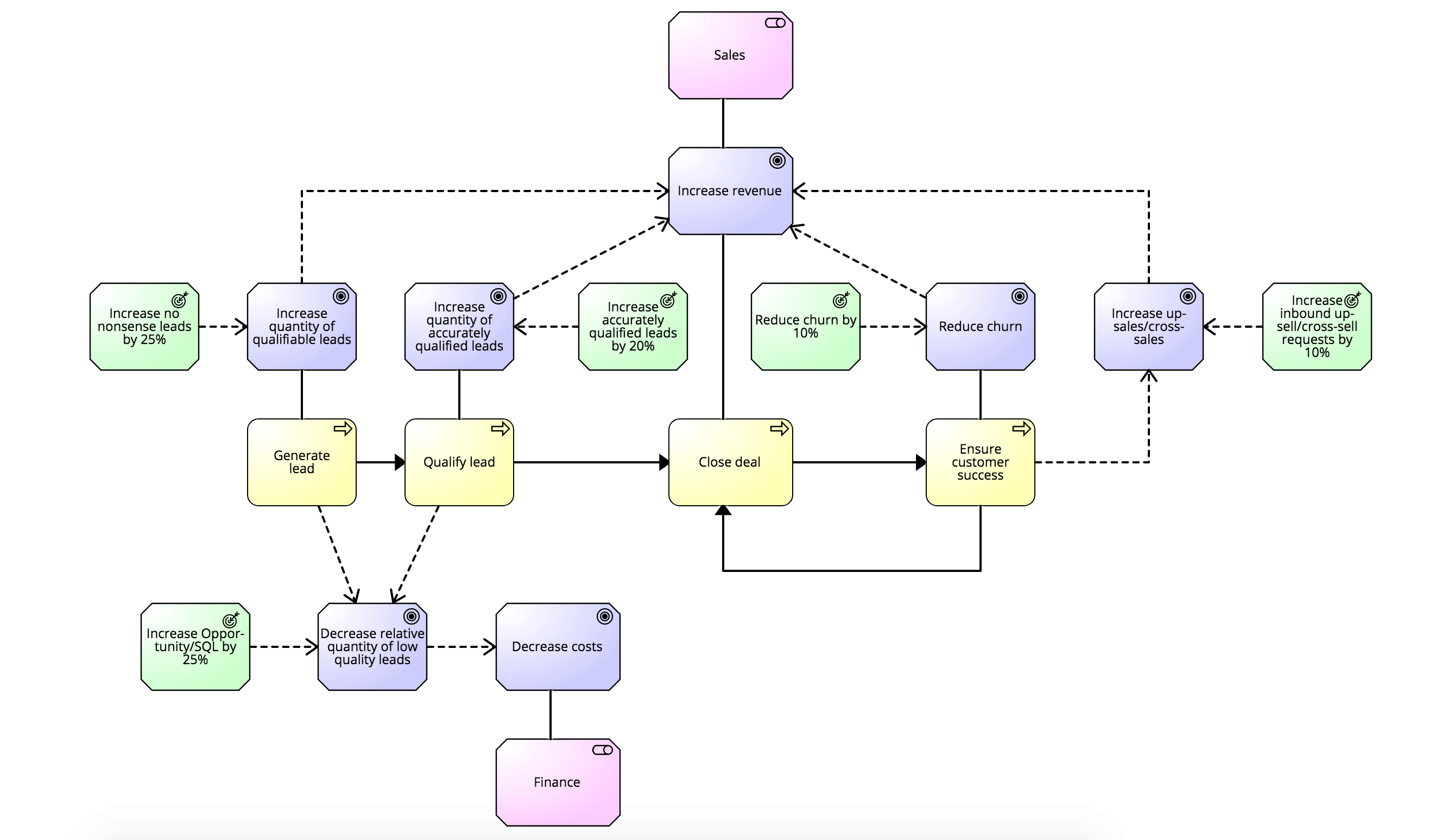Hint: Are you new to enterprise architecture modeling with ArchiMate? In a previous blog post - Enterprise architecture modeling for business process professionals - we introduced enterprise architecture modeling with ArchiMate.
Your processes need to reflect your overall business goals
In the course of your continuous improvement efforts, you must ensure your processes stay aligned to the strategic goals of your organization. While this sounds like a no-brainer, achieving it is harder than it first seems. For example, let's take a look at an end-to-end enterprise software sales process.
Our process consists of four subprocesses:
- The lead generation process, owned by the Marketing department
- The lead qualification process, owned by the Business Development unit
- The deal closing process, owned by the Sales department
- The customer success process, owned by the Customer Success department
Without the overall company goals in mind, each organizational unit is prone to optimize their subprocess without keeping an eye on the long-term implications:
- Marketing optimizes lead output and ignores that most leads it generates won't be qualifiable.
- In its struggle to identify high-quality leads in a mass of low-quality lead data, Business development is overly eager to interpret leads as 'qualified', even if it is clear that many leads they forward to Sales can't be turned into long-term customers.
- Sales tries to close as many (large) deals as possible, without considering churn and missed up-sell opportunities if the product can't deliver on the promises made.
- Customer success can't do more than fight the fires of customer dissatisfaction.
This behavior is often encouraged by middle management that sets simple and easily quantifiable short-term performance goals for the team that reports to them, without keeping the big picture in mind.
Introducing the ArchiMate motivation aspect
To solve this problem, you need to take a look at the overall business goals and align the objectives of each process steps accordingly. That's where ArchiMate and its motivational aspect comes into play. While the ArchiMate modeling notation is typically associated with the management of IT landscapes, it also allows you to model abstracts aspects of your organization, like goals and strategies. This makes ArchiMate a perfect addition to BPMN as a tool to define your process landscape.
Let's take a look at the core ArchiMate motivation elements we will use in our example scenario
- Stakeholder. A stakeholder is an organizational unit or individual with interest in (a specific part) of the enterprise. In our example, we will model the core stakeholders - Sales and Finance - who want to influence the different process steps.
- Goal. A goal specifies a high-level intent towards which the organization should move. Overall goals are - in our example, as well as in most businesses - increase revenue and decrease costs.
- Outcome. An outcome represents specific results that have been achieved. We will create outcomes based on sub-goals for specific process steps, as you will see later.
In addition, we only need the business process element and some connectors.
Let's get started with modeling!
First, we model the business process, our core stakeholders, and overall goals. Note that we connected Ensure customer success back to Close deal to indicate the impact successful customers have on upsell and cross-sell opportunities.
Now, we need to align the different process steps to the overall goals. For this, we define additional subgoals that specify how the different process steps contribute to the overall business goals. For example, the process step generate lead should not merely be optimized to increase the total quality of leads, but also:
- Increase the quantity of qualifiable leads,
- Decrease the (relative) quantity of low quality leads.
With these goals clearly set, the marketing department is incentivized to not only consider quantity, but also the long-term business potential of contacts when generating leads. Having these goals explicitly modeled also enables management to consider the degree to which goals have been reached in performance reviews.
The following diagram shows further sub goals that serve as intermediates between overall goals and process steps.
Of course, it is possible to define further sub goals, for example, to incentivize cost-decreasing behavior during sales and customer success activities.
Once we have adjusted the department's objectives and worked towards them, we should be able to add outcomes to our model, that quantify how the different departments worked towards the new objectives - for example during the next quarter:
Hint: In a real life scenario, it is crucial to involve all stakeholders when re-defining our goals. To ensure all department managers and upper-level management agree with the defined goals, ensure request approval and collect feedback, for example via Signavio Process Governance and SAP Signavio Collaboration Hub.
Conclusion: Visualizing the why behind your processes with ArchiMate
With ArchiMate's motivation elements, you can visualize business goals and their relations to different stakeholders and processes. This avoids focusing on micro-level objectives and helps ensure your processes are aligned with the high-level goals of your organization. Of course, strategy modeling is just a means to the end of enabling behavior that aligns itself with your organization's overall goals. At the end of the day, it's your ability to create a culture that embraces high-level business goals that makes or breaks the company.
To get started with enterprise architecture modeling now, sign up for a free trial of SAP Signavio Process Manager.






